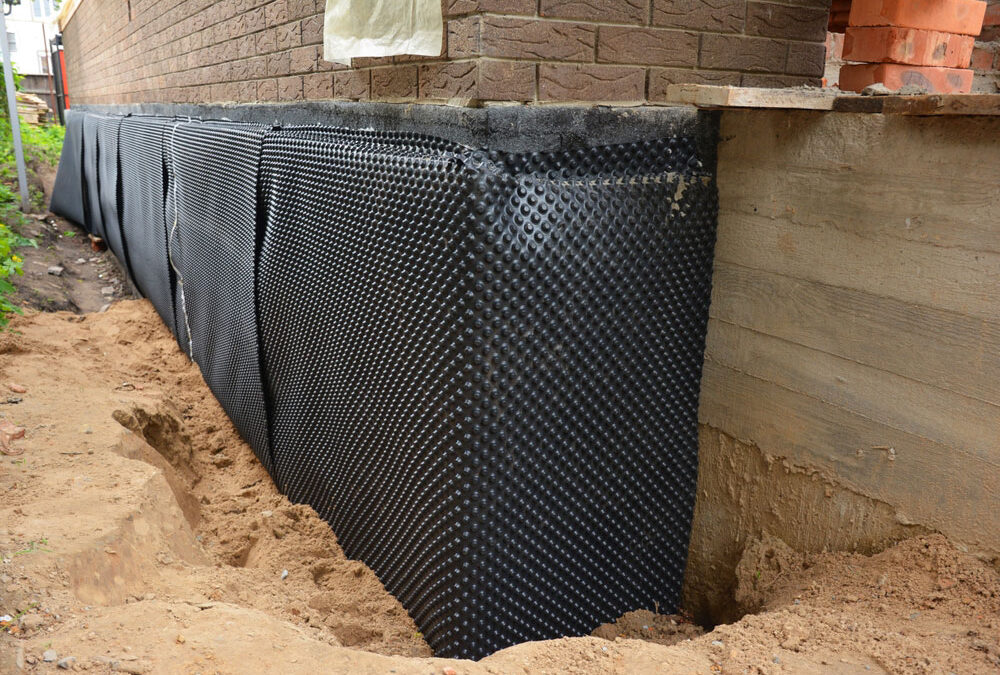For homeowners living in areas with heavy rainfall, consistent humidity, or fluctuating moisture levels, protecting the home from water damage is not just a seasonal concern—it’s a year-round necessity. Moisture intrusion can lead to a variety of costly and dangerous problems, from mold growth to structural instability.
That’s why exterior waterproofing is a critical investment for homeowners in wet climates. Unlike interior solutions that only manage water after it enters the home, exterior waterproofing acts as the first line of defense.
It helps to keep moisture out of the foundation and walls entirely, preserving your home’s integrity and value over time. Here’s why this process is essential, along with practical steps to safeguard your property.
Prevents Structural Damage to Foundations and Walls
Persistent exposure to moisture can weaken your home’s structural elements.
- Water can seep into cracks and pores in the foundation, causing concrete to degrade and expand over time.
- Soil erosion and hydrostatic pressure can shift or crack the foundation, leading to uneven floors or doors that won’t close properly.
- Wet basements or crawl spaces often signal that exterior walls are no longer repelling water effectively.
By applying waterproof membranes and sealants to your home’s exterior, you prevent this kind of damage before it takes hold. Maintaining a dry foundation helps ensure long-term stability and protects your investment.
Reduces the Risk of Mold, Mildew, and Indoor Air Quality Issues
Moisture buildup in basements and crawl spaces can create ideal conditions for mold growth.
- Mold thrives in damp, dark environments and can begin growing within 24 to 48 hours of water exposure.
- Spores can enter living spaces, triggering allergies, respiratory issues, and other health problems.
- High humidity from water intrusion can also damage insulation, drywall, and stored belongings.
Effective exterior waterproofing helps block moisture before it has a chance to affect your home’s interior. This not only preserves your indoor air quality but also protects your family’s health and reduces potential remediation costs.
Improves Home Energy Efficiency and Comfort
Excess moisture doesn’t just damage your home—it can also make it harder to heat and cool.
- Damp walls and insulation reduce thermal efficiency, making your HVAC system work harder to maintain a consistent temperature.
- Waterproofing systems can help seal gaps and cracks, reducing drafts and keeping out humid air.
- Dry homes retain heat better in the winter and stay cooler in the summer, lowering energy bills.
By preventing unwanted moisture infiltration, exterior waterproofing improves insulation performance and helps you maintain a comfortable indoor environment year-round.
Protects Landscaping and Property Value
Exterior waterproofing also contributes to your home’s appearance and marketability.
- Water pooling near the foundation can damage landscaping and lead to unsightly erosion or muddy patches.
- Drainage systems such as French drains and gutter extensions help channel water away from the home effectively.
- A well-maintained, dry foundation improves curb appeal and reassures potential buyers about the home’s condition.
If you’re planning to sell, having an effective waterproofing system in place can add value and give you a competitive edge in a tough real estate market.
For homeowners in wet climates, exterior waterproofing is more than a maintenance task—it’s a strategic investment in your home’s safety, comfort, and value. From protecting the foundation to improving energy efficiency and preventing health hazards, the benefits of keeping water out are clear.
By addressing vulnerabilities before problems arise, you’ll save on costly repairs, extend your home’s lifespan, and enjoy greater peace of mind. Whether you’re building new or upgrading an older property, waterproofing should be at the top of your home improvement list.

